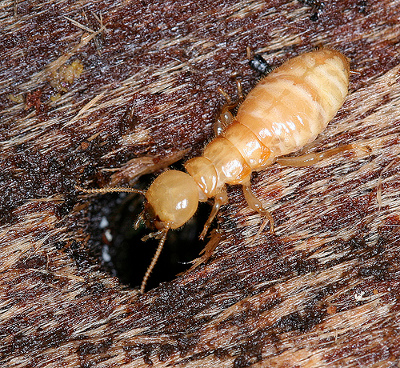Dampwood Termite
Category: Insect Other

Facts about Dampwood Termites, "Scientific name for Dampwood termite is Termopsida". Dampwood Termite belongs to a primitive small family of termites known as the Isoptera. The termite constitutes of mainly 4 to 5 living genera with individual genus having thirteen to twenty extant species which can be further divided into various sub families. Various specious of the genus termite can be found breeding in several parts of the Caribbean territories and the United States of America. Some of the genera species in their natural habitat can be located in Puerto Rico, Florida including parts of Mexico, Cuba and Bahamas, Virgin Islands and Hawaii.
The Damp wood termite is popular in the subtropical mangrove forests, urban areas of the Peninsula coastal regions of Florida, woodlands. The Dampwood Termite has its greatest distribution in Florida, extending from the Pinellas County on the Gulf coast to the Merritt Island on the eastern coast. Some of the varieties of the genera can be located along the areas of Lake Okeechobee and in the regions of Orlando.
The Dampwood Termites are usually larger in size than the termites located in the sub-terraneans. The swarmers of the termite can develop up to a maximum length of approximately one inch (2.5 cm) including their wings. The Dampwood Termite termite soldier has a larger head which is reddish-brown in color. Dampwood Termite also has large mandibles which are multi- toothed. The Dampwood Termites faecal pellets have an approximate height of one 3 foot, 8 inches (111.7 cm). The faecal pellets usually resemble the color of the wood being fed on. The Dampwood Termite are often have a similar elongated oval shape like that of the dry wood termites. However, their six sides are flattened rather than the normal concave shape displayed by the Dampwood Termites. The pellets can be round or spherical depending on the dampness of the wood.
The Dampwood Termite can only infest and feed on wood which has high moisture content. The Dampwood Termite is often found to occur on dead trees, stumps and felled timber. Some of the genera of the termite can be found to infest dead limbs of live standing trees. The Dampwood Termite can infest structures or buildings where the timber is in contact with moisture from ventilations, plumbing leaks and drainage deficiencies. Excessive moisture from old gutters filled with dead leaves can also be accumulated in most wall cavities making it prone to the Dampwood Termites. The Dampwood Termite usually infests the wood directly without burrowing in the soil.
The Dampwood Termite usually doesn’t create shelter tubes like the termites in the subterranean areas. The appearance of the wood infested by the termites can widely vary. However, the feeding is usually across the grain, consuming both the summer wood and spring. As the Dampwood Termites feed on the wood, they make series of galleries which are connected by tunnels with smooth walls.
The Dampwood Termite can be a nuisance. However, they do not cause extreme damages to man-made structures as compared to the Dampwood Termites. The termite can be of less importance to humans as they mainly feed on rotten wood.

 Back To Category Insect Other
Back To Category Insect Other